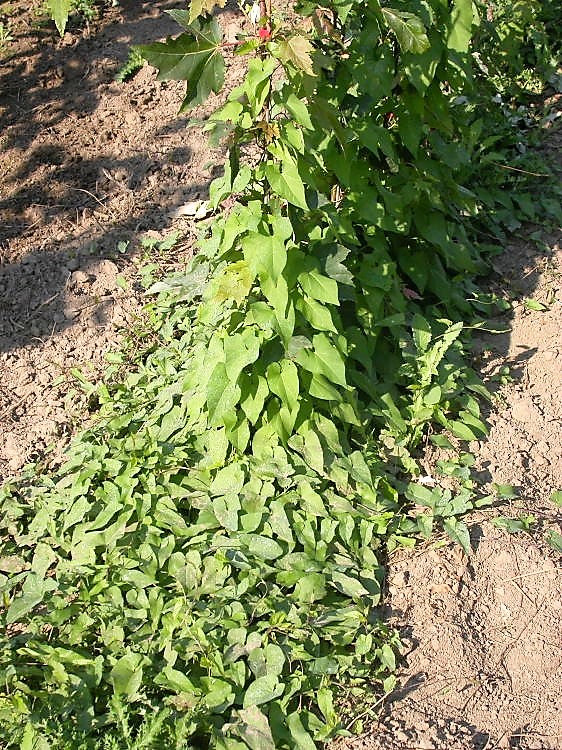
Weeds are, unfortunately, a common sight, but it takes a special kind of weed to make the “World’s Top 10 Worst Weeds List.” Field bindweed (Convolvulus arvensis), a non-regulated Class C noxious weed, is one of them. If you’ve ever found it in your yard, you probably understand why.
Field bindweed is a perennial vine that grows along the ground and over all objects it meets, twining itself around them. It’s a major pest in fields, turf, and farmland (hence its name arvensis, “of the field”), and also grows in residential areas. These days, people struggle with it in at least 19 countries and on 32 separate crops. Bindweed roots are deep and extensive, reaching 15 feet deep and 20-30 feet wide, making it difficult to eradicate. What’s more, it reproduces not only by seed, but also via roots, rhizomes, and stem fragments. So if you hand-pull bindweed and leave many bits behind, you might end up with a lot of new plants when you return.




Luckily, you have a few options for controlling your field bindweed, although all are time-consuming. For small plants, hand-pulling can be effective. Dispose of all plant fragments in city-provided yard waste bins, not a backyard compost pile. For larger infestations, you can try smothering the plants with mulch, black plastic, or geotextile fabric over several years. Keep a close eye on the area, as bindweed is good at surviving without light and finding the covering’s edge. Do not dig or till mature infestations because overlooked root and rhizome fragments can resprout.
Last, certain herbicides can be effective in controlling field bindweed. For more information on herbicides and all other control methods, visit the following pages:
- Field Bindweed (King County Noxious Weed Alert)
- Field Bindweed (Washington State Noxious Weed Control Board)

A closely related King County Weed of Concern is hedge bindweed, a.k.a. morning glory (Convolvulus sepium). Hedge bindweed looks similar to field bindweed, but its flowers and leaves are both larger. Leaves are also hairless and more distinctly arrow-shaped to heart-shaped. This bindweed grows more often in residential areas, such as urban open spaces and gardens. Its root system isn’t as deep as that of field bindweed, but removal is still labor-intensive.


Humans have interacted with field bindweed for at least 2,000 years. The Romans called it “a large worm that wraps itself in vines.” So if you’re struggling with this weed in your yard, park, or neighborhood, know you’re not alone.
As always, feel free to contact us with any questions: noxious.weeds@kingcounty.gov or 206-477-WEED (206-488-9333). Good luck!
References
Historical and international facts for this article come from the Weed Science Society of America’s “Intriguing World of Weeds”: http://wssa.net/wssa/weed/intriguing-world-of-weeds/#x
Photos and information from Oregon State University come from the very informative article “Vine Weeds”: https://oregonstate.edu/dept/nursery-weeds/feature_articles/vines/vine_weeds.html
